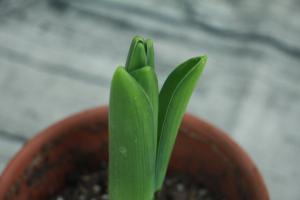How Often to Feed Strawberry Plants in Pots
Growing your own strawberries in pots is a rewarding experience, as you get to enjoy the fruits of your labor and have fresh berries on hand whenever you want. But to ensure that your strawberry plants in pots are healthy and productive, you need to feed them regularly with the right fertilizers. The question is: how often should you be feeding your strawberry plants in pots?
Understanding the Nutritional Needs of Strawberry Plants
Before we dive into the frequency of feeding your strawberry plants in pots, let's first understand their nutritional needs. Strawberry plants require three main nutrients: nitrogen, phosphorus, and potassium. Nitrogen is responsible for leaf and stem growth, while phosphorus promotes strong root development and flower production. Potassium, on the other hand, helps with fruit setting, ripening, and disease resistance.
When you're growing strawberries in pots, the soil tends to lose nutrients faster than if you were growing them in the ground. This means that you need to supplement your plants with fertilizers to ensure that they're getting the nutrients they need to thrive.
Feeding Frequency for Strawberry Plants in Pots
The frequency of feeding your strawberry plants in pots depends on the type of fertilizer you're using. There are two main types of fertilizers: synthetic and organic.
Synthetic fertilizers, also known as chemical fertilizers, are formulated with inorganic compounds that dissolve quickly and provide an instant burst of nutrients. These fertilizers need to be applied every two to three weeks throughout the growing season.
Organic fertilizers, on the other hand, are made from natural materials such as bone meal, fish emulsion, and compost. These fertilizers release nutrients slowly over time, which means that they don't need to be applied as frequently. Organic fertilizers should be applied every four to six weeks throughout the growing season.
It's important to note that overfeeding your strawberry plants in pots can do more harm than good. Too much fertilizer can burn the roots and cause damage to the plant. Always follow the manufacturer's instructions when applying fertilizer, and be sure to water your plants well after feeding them to prevent salt buildup in the soil.
Other Tips for Feeding Strawberry Plants in Pots
Here are some additional tips to keep in mind when feeding your strawberry plants in pots:
When using synthetic fertilizers, it's important to water your plants well before and after feeding them to prevent the fertilizer from burning the leaves.
When using organic fertilizers, it's a good idea to mix them into the soil before planting your strawberries to ensure that the nutrients are evenly distributed.
If you notice that your strawberry plants are not growing well, despite regular feeding, it could be a sign that they need more sunlight or better drainage.
Always use high-quality potting soil when planting your strawberry plants in pots to ensure that they have the right nutrients and pH levels.
Conclusion
Feeding your strawberry plants in pots is crucial for their growth and productivity. The frequency of feeding depends on the type of fertilizer you're using and the needs of your plants. Whether you opt for synthetic or organic fertilizers, make sure to follow the manufacturer's instructions and water your plants well after feeding them. With the right care, your strawberry plants will produce juicy, delicious berries that you can enjoy all summer long.

 how many times do yo...
how many times do yo... how many planted tre...
how many planted tre... how many pine trees ...
how many pine trees ... how many pecan trees...
how many pecan trees... how many plants comp...
how many plants comp... how many plants can ...
how many plants can ... how many plants and ...
how many plants and ... how many pepper plan...
how many pepper plan...































